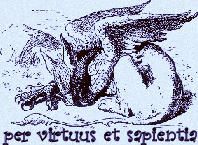As I've been nosing around my blog, trying halfheartedly to stoke it back to life, I came across a surprising number of blog drafts that I never remember having written. Some of them are mere sentences, others are almost complete. Here's one from 12/15/07, and why I never published it, I couldn't say.
I probably meant to write more.
A Walk in the Dunes
I went for a walk in the dunes. I did not take my camera. The day was bright and cold, an overcast sky, and the whisper of the trees and the rustle of the grasses spoke of rain. But I went anyway.
I stood out on the crest of the highest dune, looking out towards a horizon that could not be seen, then jumped over the edge and ran down in great leaps of cascading sand to the bottom. I followed my dog, walking until the roar of the highway behind me was replaced by the roar of the ocean in front of me. The sand, hard packed by the dampness of winter, showed every foot that had ever crossed it. Mouse prints threaded between the light, long tracks of birds. Tracks of a lizard, a snake, a mysterious hopping creature that I could not identify. Then a wide-padded creature that left sweeping traces of its long claws, disappearing over a dune too far to follow with the straight, purposeful stride of a predator. My dog's tracks too, swirling around me like the flourishes of an old-fashioned signature, and my own, a clear line traceable all the way to the forest's edge.
I followed some fox prints into a low lying island of trees, a place I usually dare not go because of childhood warnings of quicksand, which forms in the wet bottom area, and of devil's chimneys, pockets of air in the sand that form when a dead tree is buried, able to swallow a hiker in one misstep, with no clue left behind but a broken set of tracks. Stay high in the dunes, they say. But I followed the fox until its footprints were lost in a steep stretch of loose sand. Once gone, the tracks did not reappear. Fox ceased to exist. Red fescue dotted the slope, and also tiny trees with palmate leaves, bonsai hangers-on from the days of dinosaurs, and delicate moss clinging as precariously as film to the ground. I could not tread too lightly; my feet were heavy, awkward.
The tree islands, some say, are able to move when they're still young. They walk along their root paths, pushed along by the shifting sand. But this island was beyond wandering, young but fixed, and so dense that I, following game trails, was quickly covered over by its darkness. In a clearing in the the middle I found an old fire pit, a secret place where someone once came to sit in the sand and the trees, all shadows and silence. The mushrooms of fall were still there, toppled over and rotting, chanterelles that had miraculously been left unplucked past the harvest. It seemed like a true, inland forest, but kicking up the fallen pine needles destroyed the illusion, uncovering the sand just beneath.
A walk across the slope of a dune is a curious thing. The foot makes contact on its side, not sole, and though you are neither climbing nor sinking, every step must be made slightly higher than the last. In the summertime when the sand is quick and dry, the tracks at the beginning of a walk are gone before you return; the devastation done to the slope of the dune disappears in a breath of wind. But in the wintertime, the sand turns to stone. The hills are carved and cut, and the sand takes on mysterious shapes. The crests of the dunes where the wind blows over forms layered scallops and ridges, spires and buttes, sticking up like mini-dioramas of Zion and Bryce Canyon and Arches National Park.
12 years ago





No comments:
Post a Comment